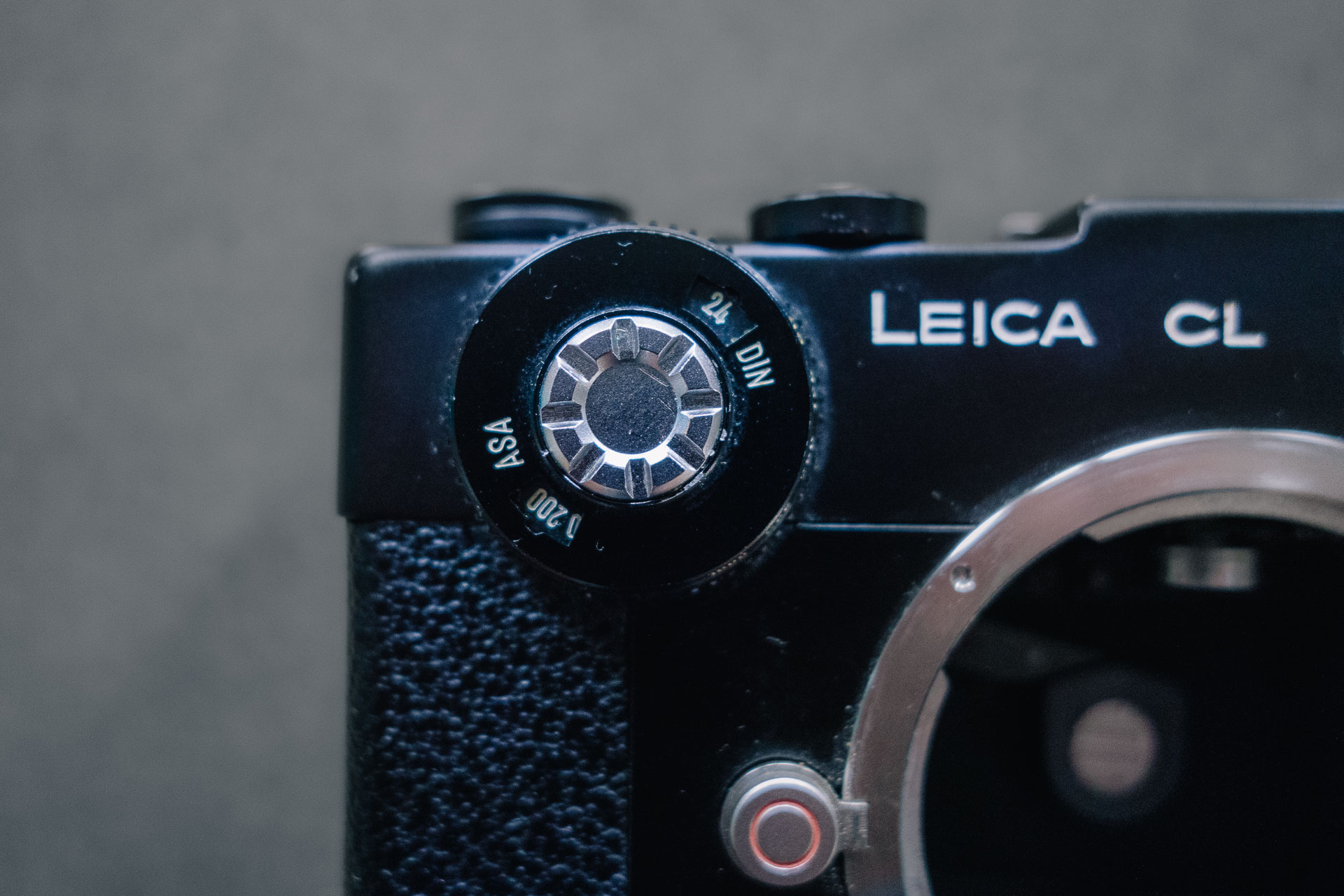
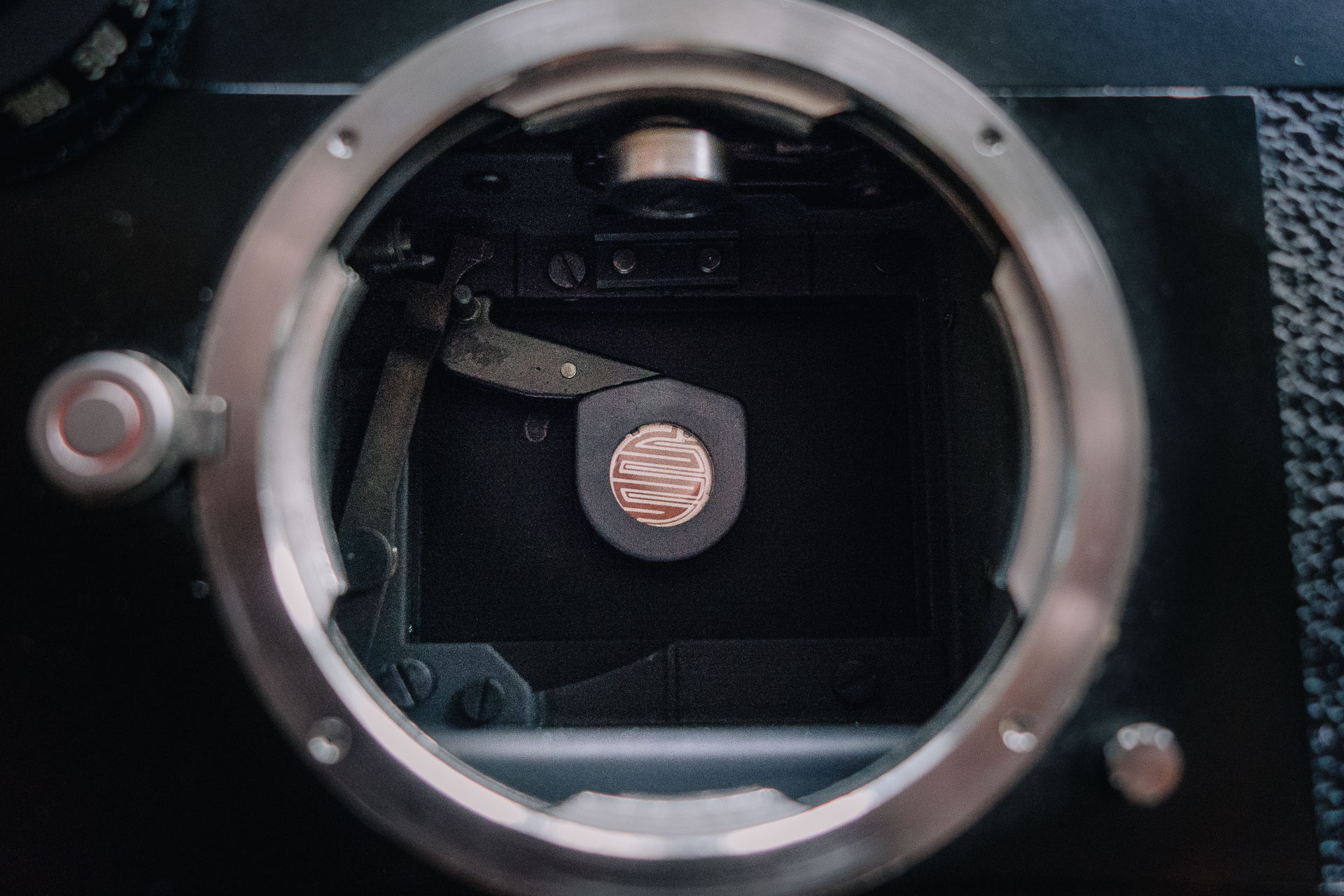

The shutter speed dial (note overlap of top plate), arm mounted CdS meter cell in front of the shutter curtain and a look through the viewfinder with the meter indicating proper exposure at 1/1000th.
It’s easy to disregard the CL as an ugly duckling, as the odd one out in the almost majestic Leica M-mount family. It has a less flexible viewfinder and the rangefinder is not as accurate. It’s not as pretty as its cousins and constructed more cheaply. Perhaps most bothersome to purist; the camera wasn’t even built by Leica themselves. Looking beyond all that however, it offers a number of unique qualities and rare capabilities in its dignified family.
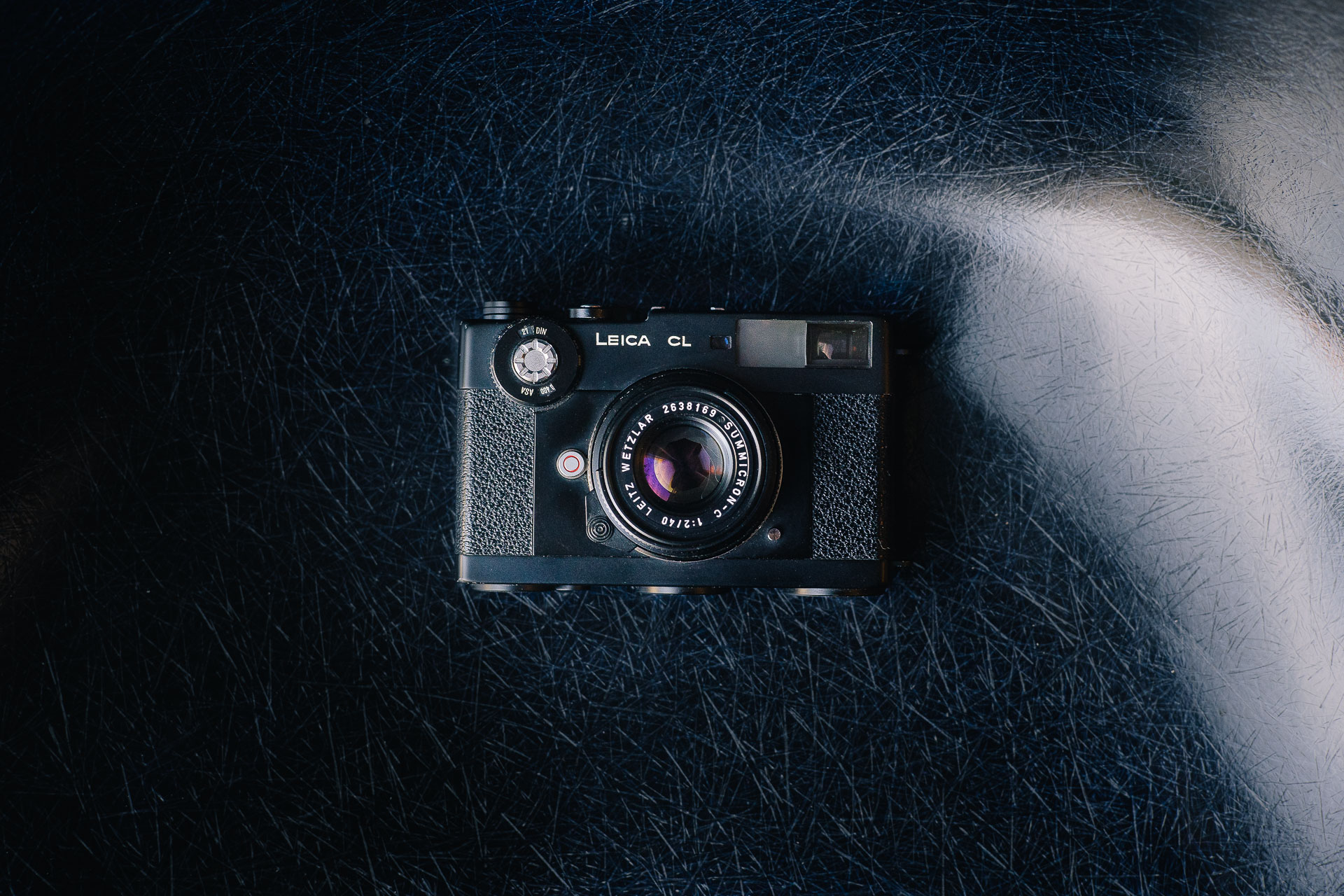
The 70’s was a rough time for Leica. Facing stiff competition from Japanese SLR:s, sales were in steep decline. The Nikon F was the main rival – offering more flexibility, a wider range of lenses as well as integrated metering. Everything at far lower prices than Leica’s cameras.
Leica had tried to counter the competition in a number of ways without succeeding.
Their own SLR effort – the Leicaflex SL – was widely regarded as far too expensive, heavy and not sophisticated enough. It had failed to take off and was before long sold at a loss (but still at twice the price of the Nikon F).
Their attempt at modernising the M line and offer one of the most sought after features at the time – through the lens light metering – was the M5. While succeeding in its sophistication the resulting camera was as big and heavy as the SLR counterparts as well as very expensive. The sales of the M5 was a disappointment, needing deep discounts to leave dealers shelves.
The only silver lining in this mess was the CL. Designed in conjunction with Minolta the Compact Leica was introduced in 1973. Offering almost everything the M5 did in a smaller, cheaper package it outsold the M5 two to one.
Produced by Minolta in a new Portugal factory, the CL could be sold at a very reasonable price. Its innovative design truly delivered on the promise of compactness. Smaller in every dimension than all other M mount cameras and at 365 grams it was close to half the weight of the M5. With the bundled Summicron-C 40/2 the camera was marginally larger than many compacts with comparable specifications. Designated C for Compact the lens was not only tiny but also delivered excellent performance, living up to the Leica name. A matching tele lens was also offered – the Elmar-C 90/4, offering reach at a very low weight and size. The entire outfit could be brought everywhere without fuss.
Read my full reviews of the CL lenses – Summicron-C 40 / Elmar-C 90
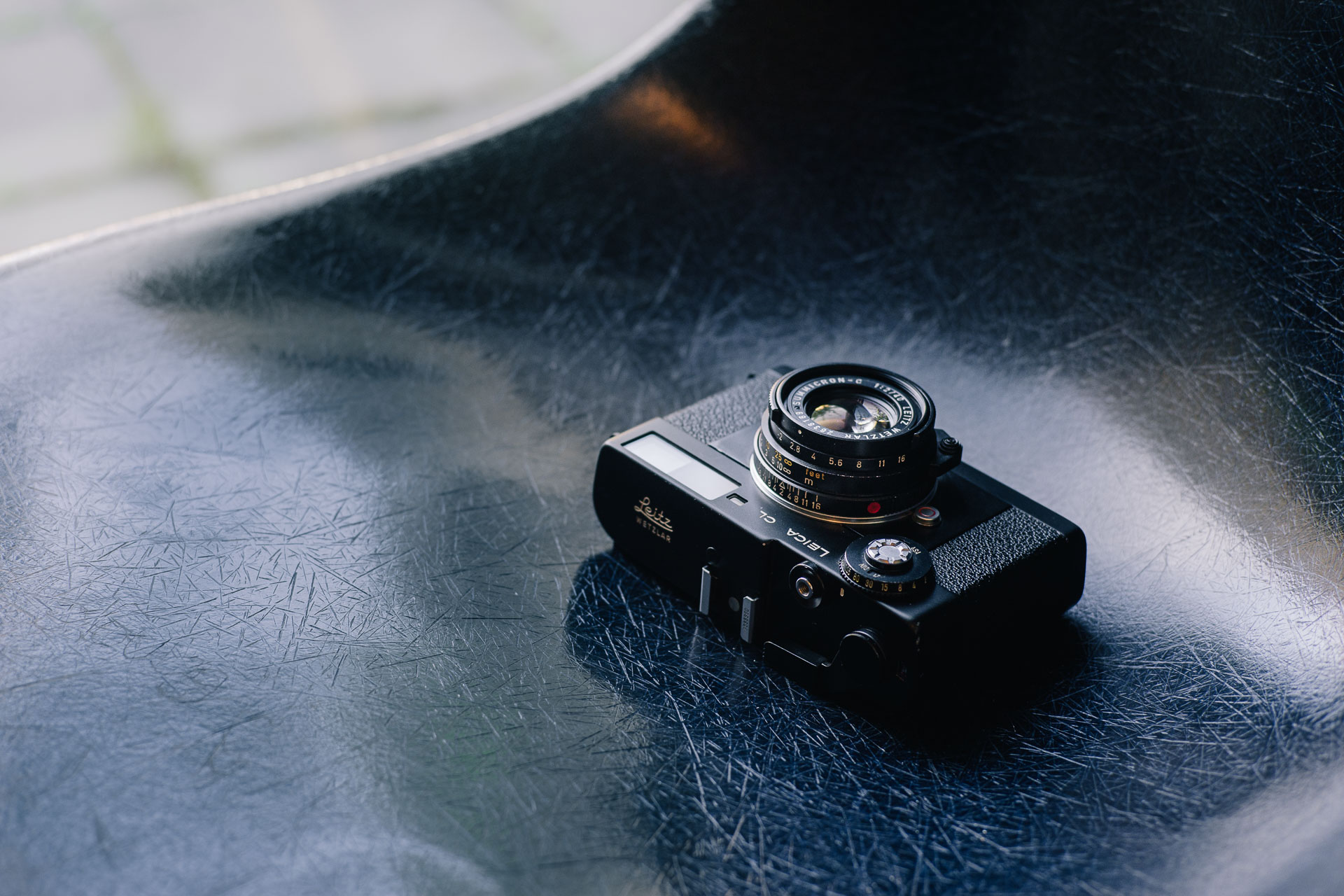
Most changes to the M5 compared to the earlier M cameras had to do with determining and setting exposure and shutter speed efficiently. Fortunately those refinements were carried over to the CL as well. This makes it one of the easiest M-cameras on which to set up good exposure.
The first part of the puzzle is the shutter speed dial. While small, the unconventional placement on the front plate makes the dial easy to turn with a fingertip, even with your eye to the finder. The chosen shutter speed is also conveniently indicated in the viewfinder – a indicator needle runs along a strip with the full set of speeds at the top edge of the finder. A through the lens spot meter is connected to a meter needle along the right edge in the viewfinder; indicating proper exposure as well as under or over exposure and by how much. This combines to one of the most convenient control set ups for light metering and choice of shutter speed among the M-mount cameras.



The shutter speed dial (note overlap of top plate), arm mounted CdS meter cell in front of the shutter curtain and a look through the viewfinder with the meter indicating proper exposure at 1/1000th.
There are some trade offs with the design however.
The additional information displayed in the viewfinder compared to the earlier M:s makes for a bit of a cluttered view. The viewfinder is also smaller and of lower magnification. Additionally the CL has fewer framelines than its larger cousins – only 40, 50 and 90mm framelines are available – limiting what lenses can be practically used on the camera. 40mm frames are always visible. The 50 and 90mm ones are alternating, one or the other always shown. Two frame lines are always visible together, reinforcing the cluttered impression.
The small size of the camera also brought some necessary compromises. The big one is focus accuracy – the narrow width of the camera forced a reduction in size of the rangefinder. The rangefinder window is placed closer to the viewfinder window resulting in lower accuracy. While the M cameras with the 0.72x viewfinder* have almost three times higher accuracy the CL rangefinder works fine for what it’s designed to do. Both lenses sold with the camera are without any accuracy issues, as is anything similarly specced or wider lenses. The problems only manifest themselves when shooting very fast or long lenses (50/1.4 or 90/2 for instance). Here the accuracy simply isn’t high enough for reliable results. Such lenses are also usually not ideal from a size/balance perspective on the CL.
* standard issue on every Leica M camera except the M3
The minimum focusing distance is 0.8m – slightly longer than the 0.7m standard set after the M3.
Some other odd design choices were also made, at least partially due to the size. Access to the film compartment is unconventional – instead of a hatch or detachable bottom plate the entire bottom and rear half of the camera is removed. As a result film loading is a bit awkward. Another unfortunate choice is that the battery is also located inside the film compartment and can’t be accessed or replaced with film in the camera. Thankfully the camera is fully mechanical and everything except the meter works fine without battery.
It’s also more cheaply constructed with cheaper, thinner and less durable materials compared to the M:s. A partial explanation for the very low weight. The strap lugs, both placed on the same edge of the body, make the camera hang from a strap vertically rather than horizontally – a matter of taste if it's better or worse than the conventional arrangement.
For many photographers the strengths of the camera outweighed the few drawbacks. The practical handling and applicable performance made it a great camera to shoot. It wasn’t surprising it sold well.
However despite the excellent features, great shooting experience and resulting good sales figures the CL didn’t bring Leica major profits. The lower selling price and the partnership with Minolta meant that the financial gains were modest.
In their desperation Leica cancelled the M5 in 1975 and then the CL in 1976, instead focusing on the SLR camera line. When resurrected in Canada a few years later, the M-line was restarted with a simplified version of the M4, a much less sophisticated camera than either the M5 or the CL.

Due to its status as an ugly duckling the CL represents one of the greatest bargains in Leica cameras.
Its status and feel as an object, piece of history and impeccable engineering isn’t up to the same standards of “true” Leica M:s. As a camera to shoot and use however, it functions equally well or possibly even better than many of the M-cameras, depending on ones needs. It’s a very functional camera but doesn’t feel as ceremonious to use.



For around half the price of any other used Leica M-mount camera you can get a fully functioning CL. If you’re set on getting a metered body the price difference is even larger (of course the Voigtländer Bessas are relevant options at not much more money). For the price any other M-body fetches you can get a full, clean set with the camera and both bundled lenses – 40 & 90mm – both great.
Buying today there are some issues to be aware of, but by and large it’s a great buy.
The mercury batteries used in the CL have been banned from production for many years and can’t be bought anymore. There are a number of different options to power the meter, I’ve used zinc-air replacement batteries called Wein-Cell with good results.
The meter cell is reportedly prone to failure and can no longer be feasibly replaced. From what I’ve gathered failure generally seems to be a result of sealing issues. Meter cells that have survived this long will likely keep working for a good while still, but there are no guarantees and again – no replacements. Note that the shutter needs to be cocked and the advance lever slightly extended for the meter to activate.
It’s fortunately possible to shoot the CL without meter or even battery. The battery is only used for the meter and nothing else in the camera needs power. I’ve shot a lot without a meter by now and it’s fine.
The plastic prongs on the film take up spool are fragile and become brittle with age. On my camera two of the five prongs have broken off. Once all are gone workarounds are needed to shoot (taping the film leader to the take up spool seems like a common suggestion). There still seems to be replacement parts available for purchase, but it’s worth checking the condition of the spool at purchase.
Like most mechanical cameras shutter speeds can become less accurate over time, without care. The same goes for the focusing calibration. A service brings everything up to par again. My camera is still completely accurate.
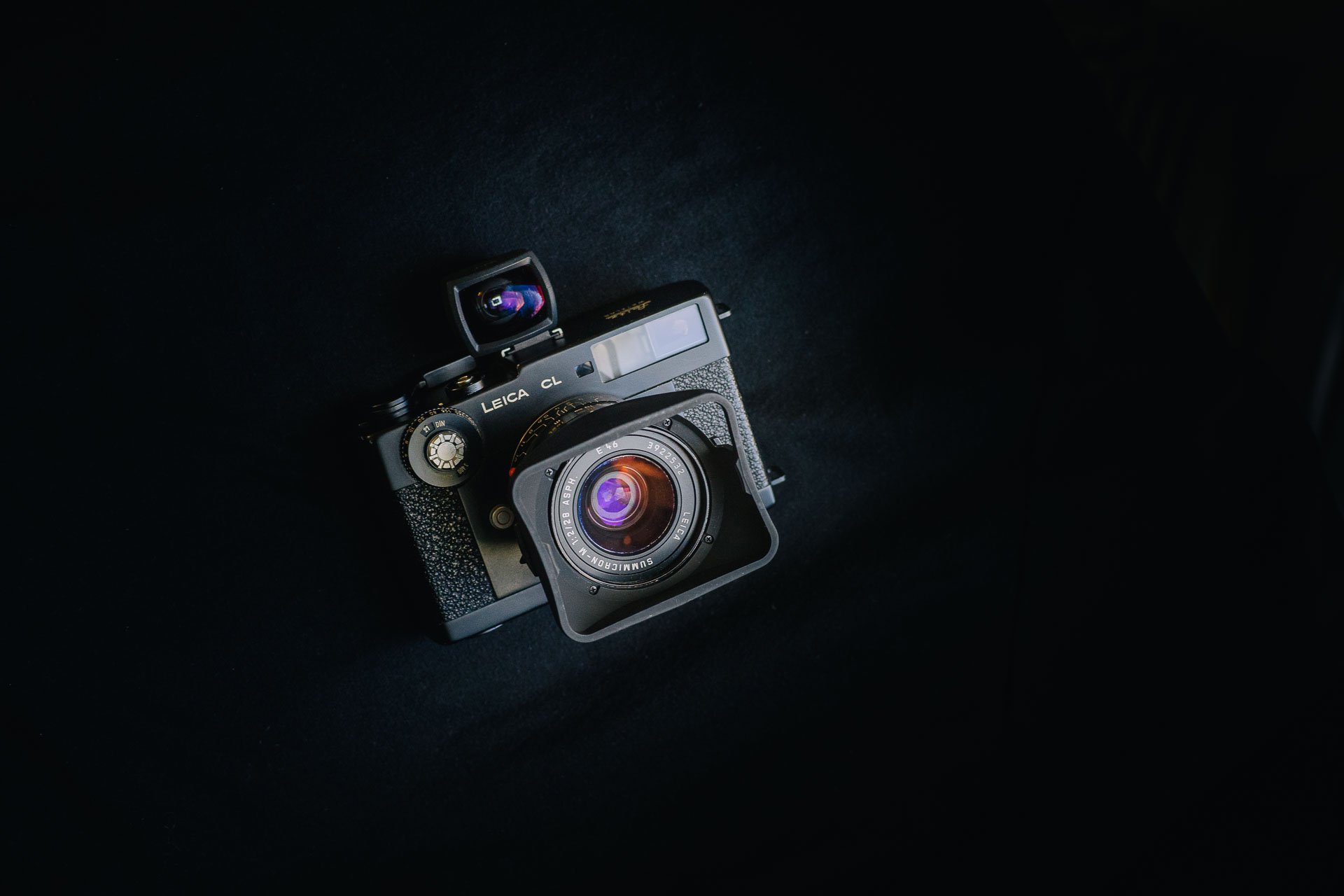
I’ve had and shot the CL for a few years by now. While my main media is digital, there are many things I enjoy about shooting film. The CL is probably the most pleasant film camera I’ve shot with so far (granted I’ve not shot with all that many) and the one with which I’ve gotten the most keepers.
Shooting the CL is very enjoyable. The ergonomics are very good and the compact and light housing makes it an easy camera to bring everywhere. The plastic grip doesn’t have quite as much friction as I’d like, but now I’m nitpicking.
The low price of purchase and all mechanical construction also makes it feel durable and less fragile – I feel less worried about it compared to my more expensive, digital cameras.
The exterior appearance might be a bit affected by the lower production price of the camera. Everything about the mechanics however, feels very solid and smooth. I’ve tried a number of M:s and both film advance and shutter button have only felt marginally smoother on those cameras. The CL is very smooth indeed. Even the shutter sound isn’t markedly louder than the other M:s despite the moving metering arm.
I’ve mostly shot the camera with the Summicron-C 40/2. A wonderful combination overall. Very well balanced, great ergonomics and potentially fantastic image quality.
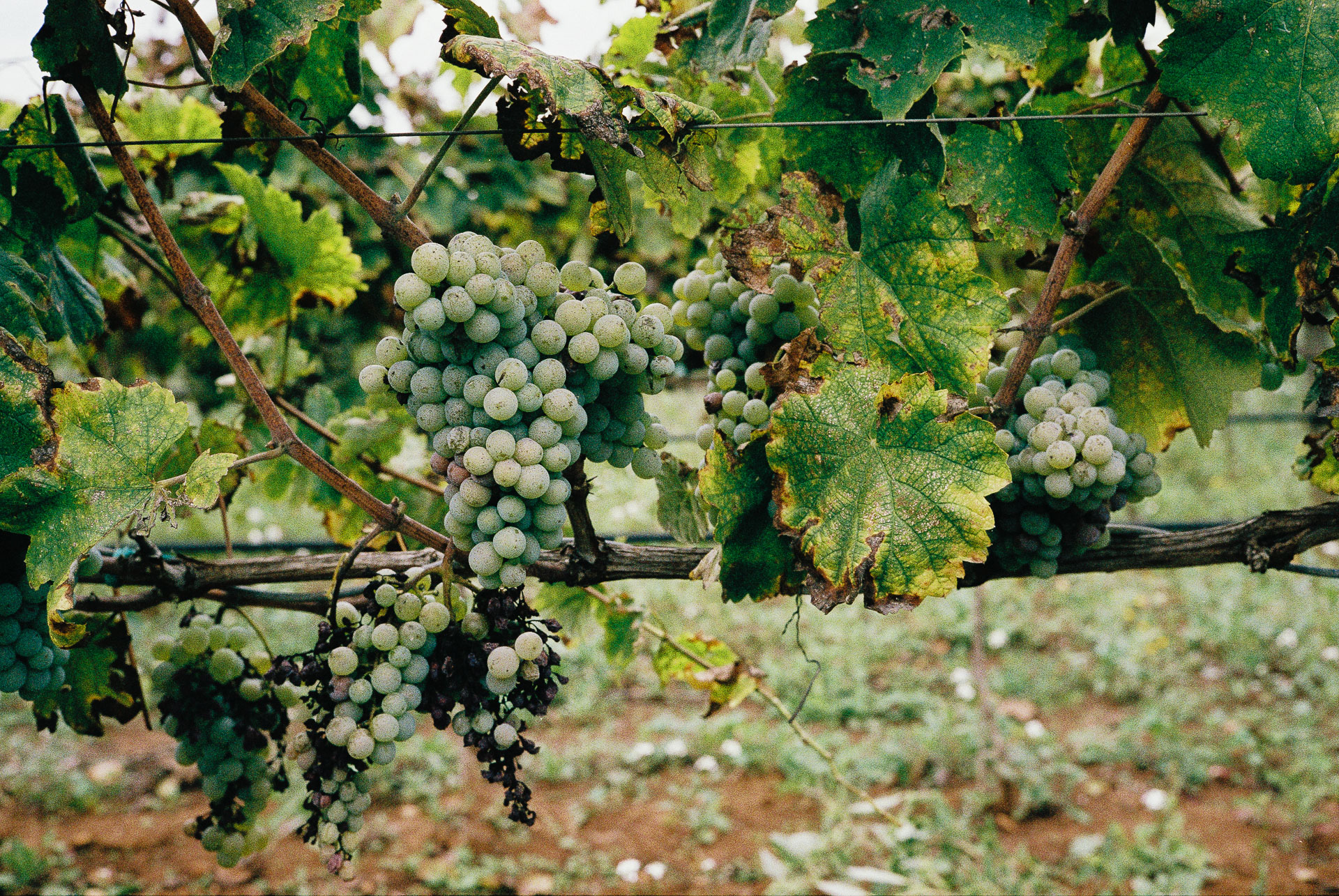
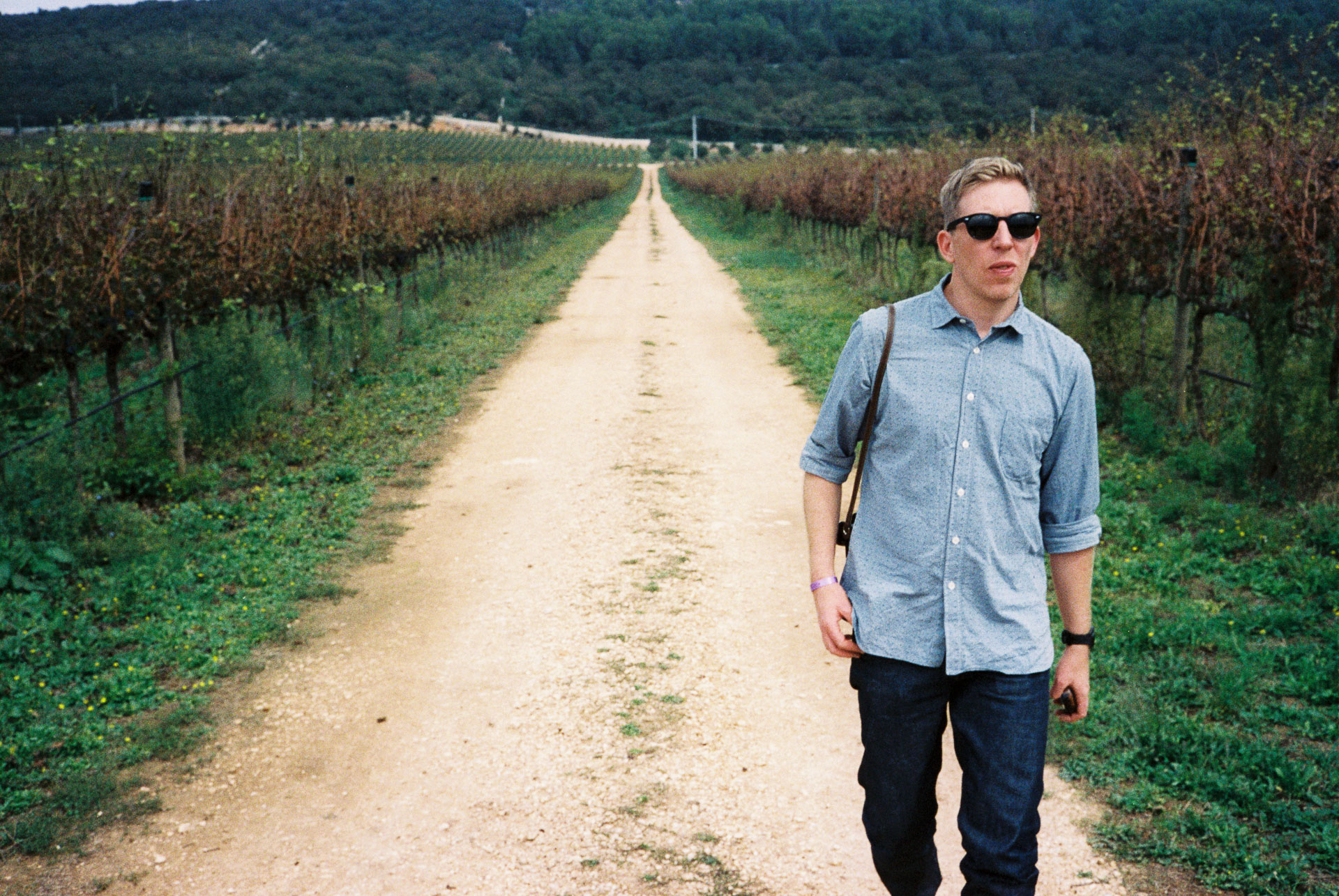
You’re a bit limited shooting other focal lengths on the CL due to the few framelines available. However it’s not as bad as it seems. 40mm is close enough to 35 as to almost be interchangeable. Using the outer edges of the 40mm framelines quite good accuracy can be achieved.
28mm is trickier. You can just about use the entire viewfinder area for framing at 28mm, but the accuracy suffers slightly. I’ve shot the CL with my 28 Summicron (full review) quite a bit, but have opted for an external viewfinder for more accurate framing. The combination, pictured above, does make it a bit more complicated to shoot, needing to look through two finders before taking the shot, but accuracy has been good and results excellent – some of my favourite shots with the CL have been made using this set up. An unexpected advantage is that the big hood of the Summicron 28 doesn’t block the external finder.

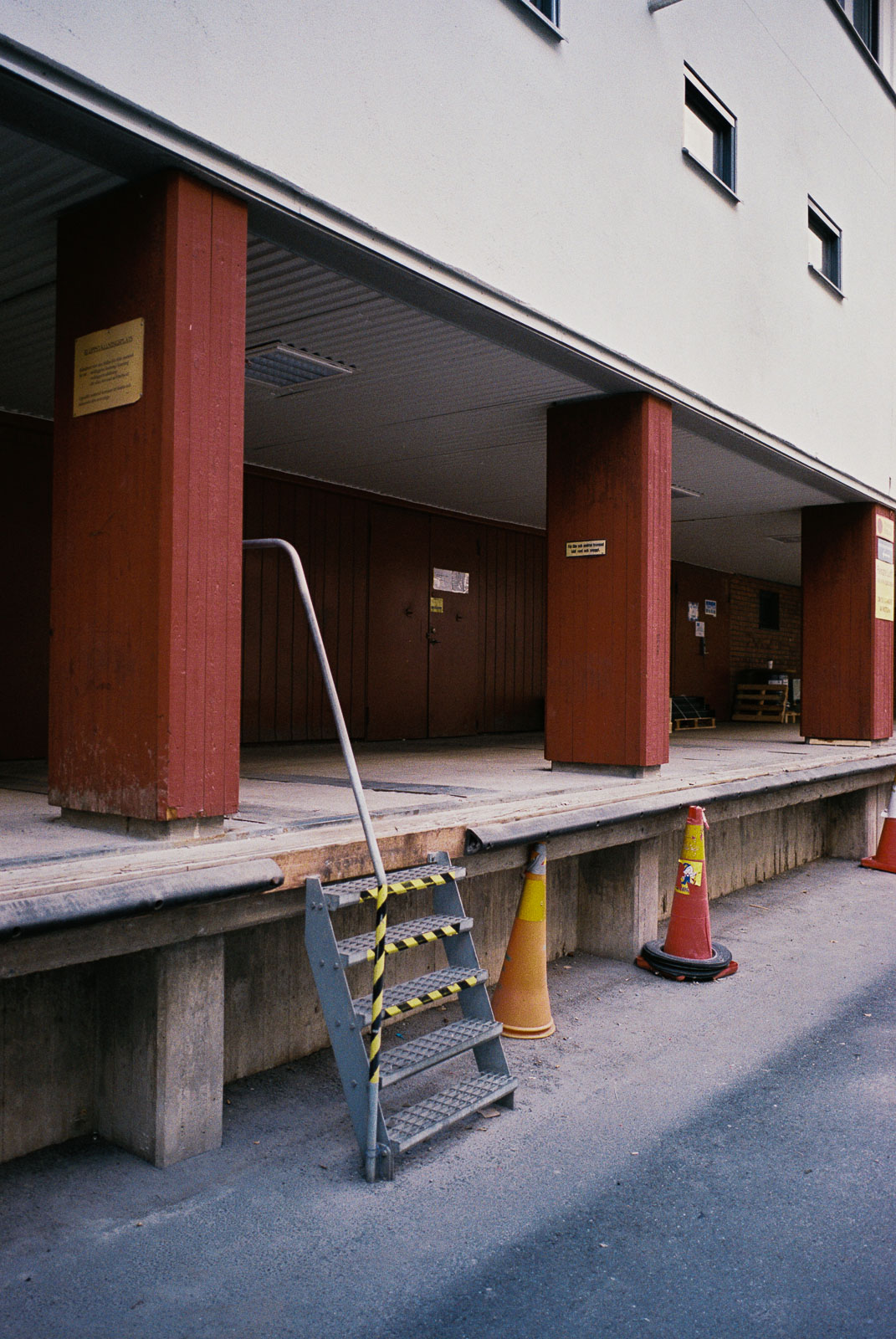
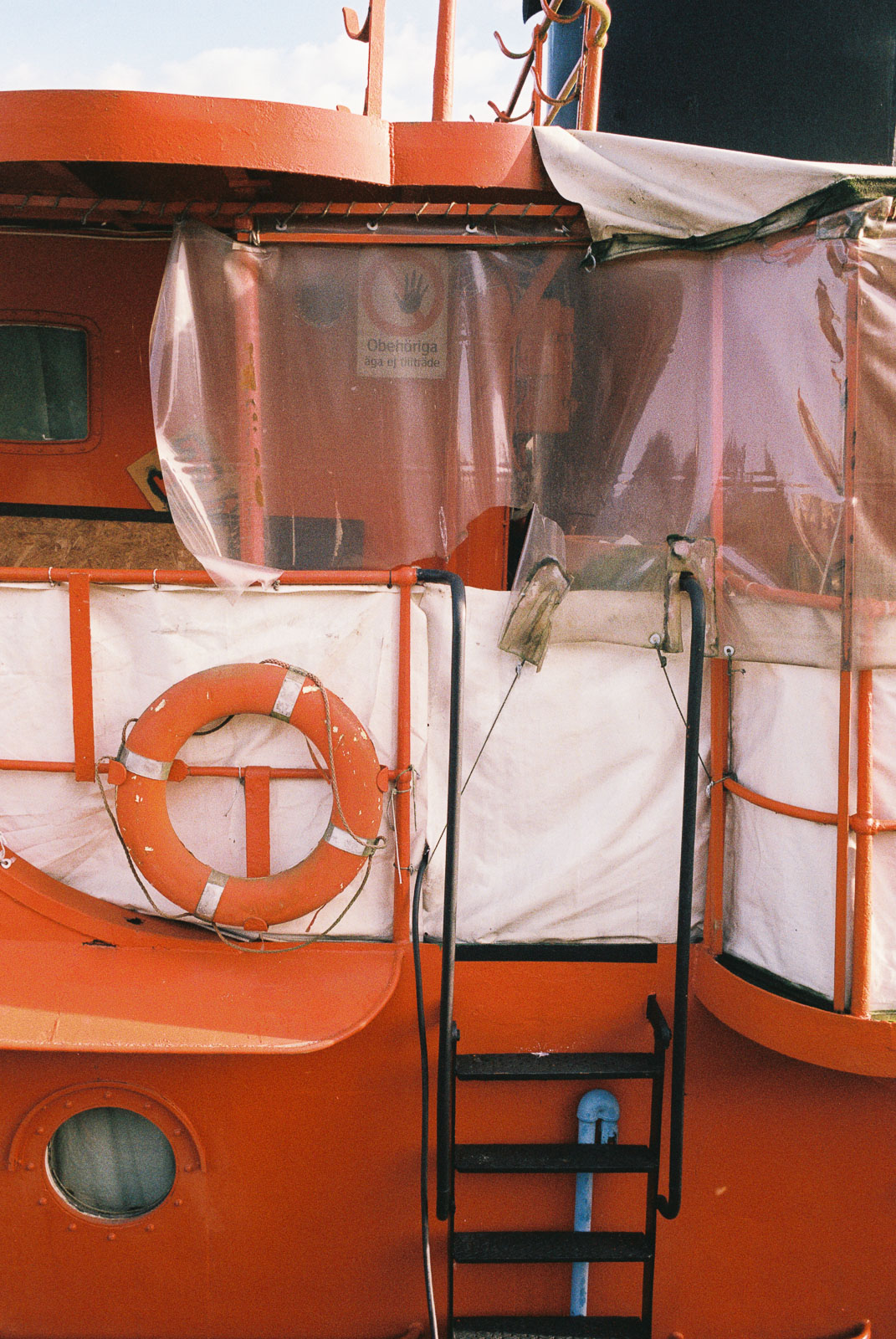
For 50 and 90mm are of course no problem to shoot since framelines are available, leaving only the later introduced 75mm lenses out in the cold.
As on any Leica M shooting even wider focal lengths practically necessitates an external finder. The tiny CL can be a great choice as a wide angle platform. Since demands on focusing accuracy is lower on wider lenses, the CL’s smaller rangefinder isn’t an issue.
While I generally prefer a centre weighted meter, the CL’s spot meter has served me well. Setting up exposure is quite fast thanks to the information visible in the viewfinder and I’ve gotten consistent results shooting print film. That said I’ve shot about half of the rolls with the CL without a battery in it. Instead using an iPhone light meter app or even opting for good old sunny–16, both without issue and with excellent results. Even without the meter the shutter speed read out in the viewfinder makes the CL quite convenient to shoot.
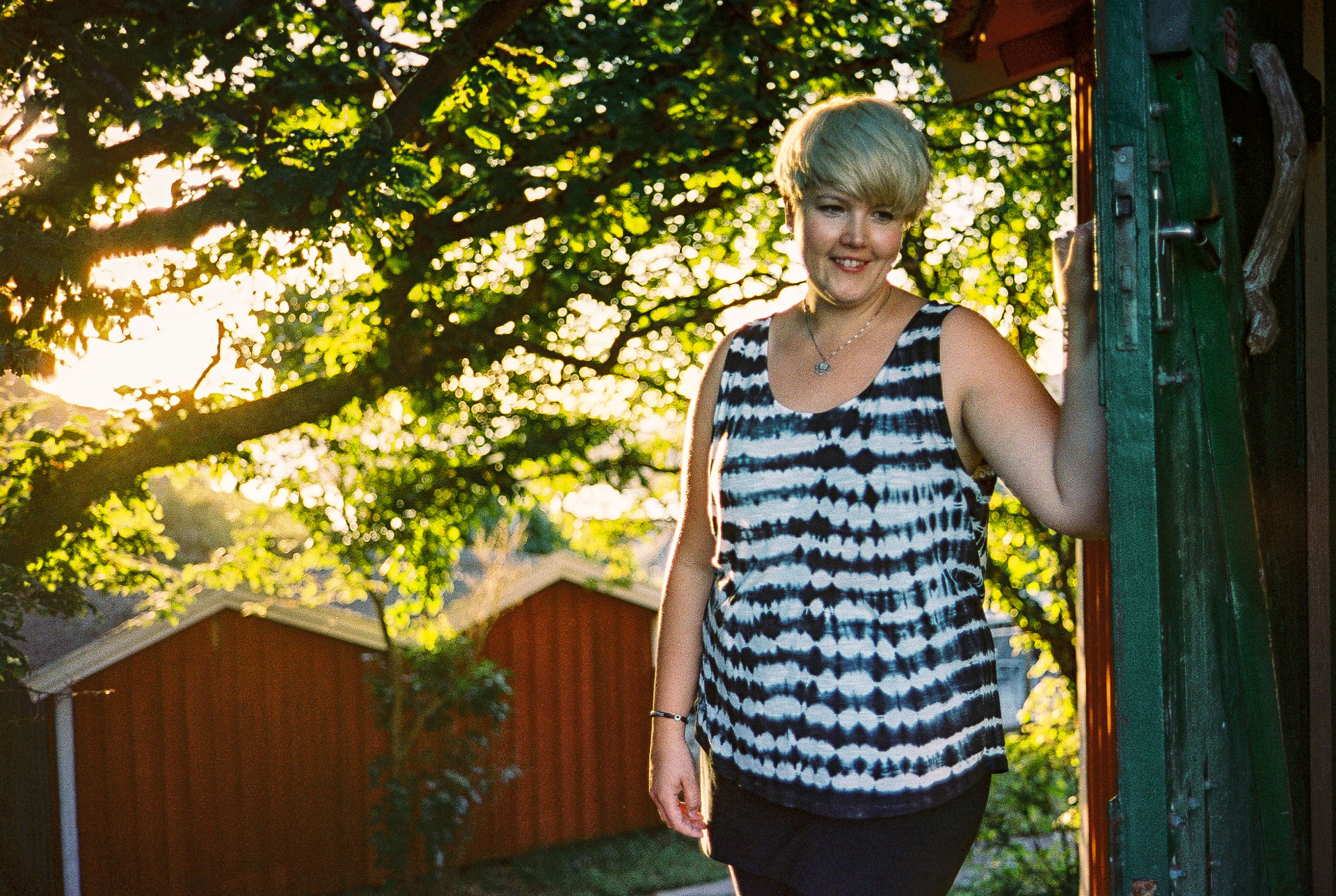
The CL is a peculiar camera in many ways. While it doesn’t have the cachet of other Leica M:s it was made during an interesting and turbulent time at Leica and deserving of its own place in history. As a tool it works admirably and can be brought everywhere without issue. Shooting the CL is for me a thoroughly enjoyable experience. I look at it now as less of an ugly duckling, and more of a swan song of a Leica that once was – less bound by tradition, more focused on innovation. In some ways a pinnacle of usability and portability.
The CL has really increased my enthusiasm for shooting film again. I have to admit though, I’m a bit curious about shooting one of the “true” M:s more extensively.
All photos except the ones of the actual camera in this post were taken using the Leica CL. Shot on Kodak Portra 400 or Fuji Superia 400, developed and scanned by Crimson in Stockholm.